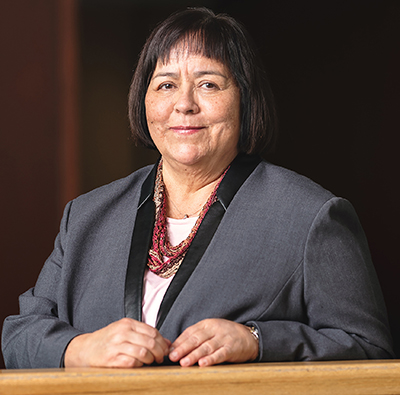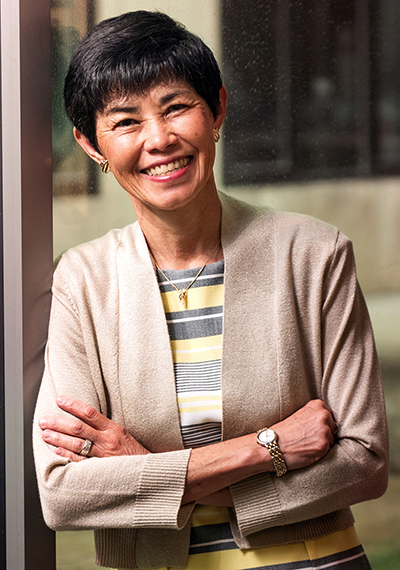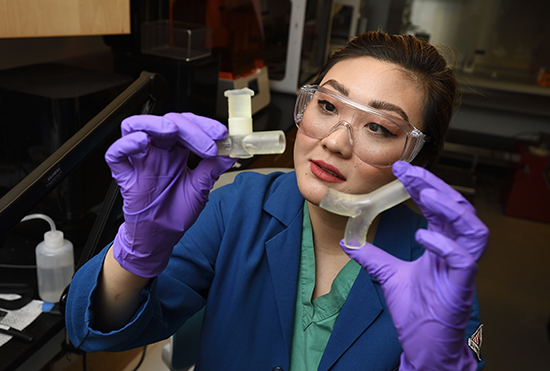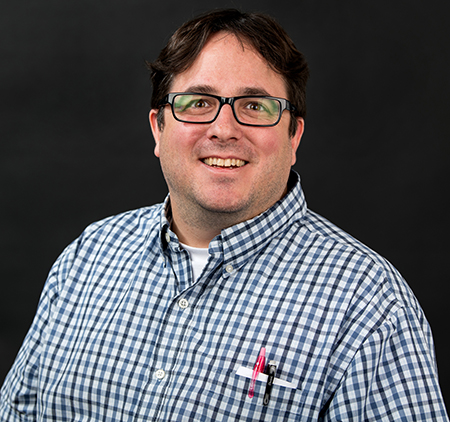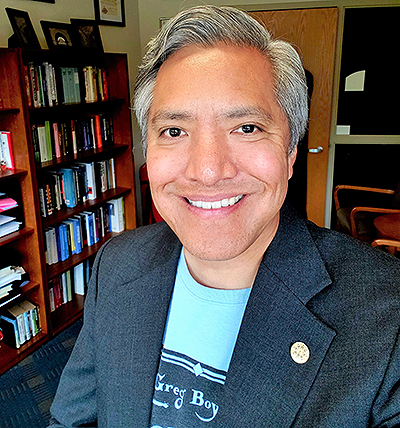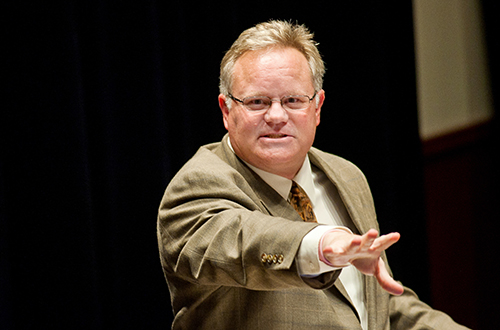Gonzaga Doubling Down on Innovation, Entrepreneurship
Friday, January 22, 2021
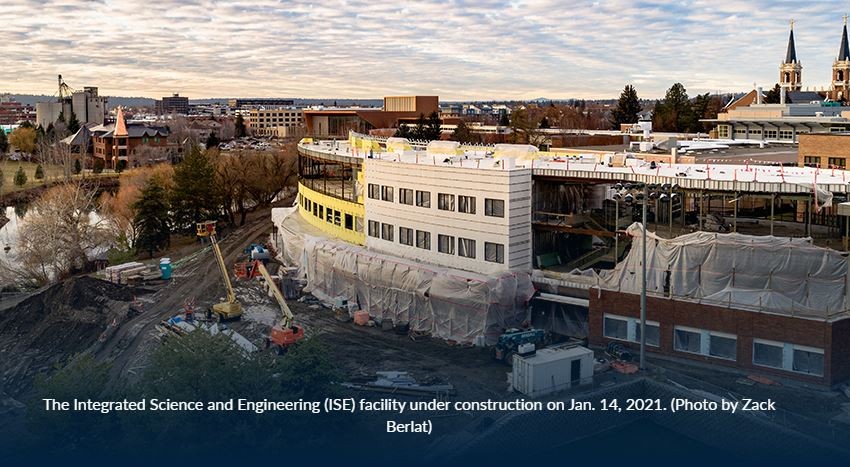
SPOKANE, Wash. — With more than two decades of experience developing leaders through the Hogan Entrepreneurial Leadership Program, Gonzaga University is doubling down on preparing innovators in business, engineering and science with a $49.7 million investment in an Integrated Science and Engineering (ISE) facility opening later this year.
Heralding a new era of expansion in STEM-related educational and interdisciplinary collaboration, the facility will foster innovation, exemplary teaching and undergraduate research — enabling faculty and students to conduct important theoretical and applied work.
Gonzaga President Thayne McCulloh, D.Phil., said the ISE will allow Gonzaga to do its “best possible work at preparing our students to be competitive, innovative and creative in the collaborative fields of science and technology, engineering and mathematics, but also in related areas where interdisciplinary studies become possible.”
In a visual statement to interdisciplinarity, skybridges will connect ISE with Gonzaga’s PACCAR Center for Applied Science and to the College of Arts and Sciences’ chemistry and biology departments located in Hughes Hall. The PACCAR Center is connected via skybridge to the Herak Center for Engineering.
Deena J. González, Ph.D., provost and senior vice president. (Gonzaga University photo)
“Together, ISE’s benefactors and Gonzaga’s faculty, senior leaders, and students bring intellectual commitments to serve our educational mission, preparing our graduates for lives of leadership and service for the common good,” said Deena J. González, Ph.D., provost and senior vice president.
The facility will allow Gonzaga to better serve its growing student body in the STEM fields, make students more competitive globally, and equip them with the research skills and experiences needed to explore solutions to real-world problems.
Karlene Hoo, Ph.D., dean of the School of Engineering and Applied Science, explained, “The ISE facility provides the space to allow for a modern multidisciplinary curriculum to be implemented that can address the myriad global challenges posed by the water-food-energy-planet nexus.”
Karlene Hoo, Ph.D., dean of the School of Engineering and Applied Science. (Gonzaga University photo)
At present, engineering students gain innovation and entrepreneurship skills through team-based Senior Design projects, working with a faculty advisor and external sponsor to develop innovative designs and prototypes.
Both Hoo and Annmarie Caño, Ph.D., dean of the College of Arts and Sciences, noted that the ISE facility will provide critical space for existing projects, expand the scope of projects for undergraduates, and promote untapped areas of bioengineering programs with components of innovation and entrepreneurship.
Helen Xun, a 2015 Gonzaga University biochemistry graduate, displays two forms of ventilator splitters she helped to design and 3D print as part of the medical response against the devastating coronavirus illness COVID-19. (Photo courtesy Will Kirk / Johns Hopkins University)
Helen Xun (’15), a biochemistry alumna mentored by Professor Shepherd, Ph.D., chair of the chemistry and biochemistry department, is but one example of the power of faculty-led innovation. Now a student at Johns Hopkins School of Medicine, Xun has taken this year off to co-found a biotech start-up to prototype medical devices.
Profusion of Innovation
A profusion of innovation is advancing science education at Gonzaga, while serving the community and global needs. For example, last fall, the University of Washington School of Medicine-Gonzaga University Health Partnership announced a new center for medical education, health sciences and innovation.
Chemistry Professor Matt Cremeens, Ph.D., director of the Center for Undergraduate Research & Creative Inquiry. (GU photo)
Gonzaga’s success in interdisciplinary collaboration is evidenced by multiple initiatives and achievements, including a recent $267,000 National Science Foundation grant to purchase an ultra-modern atomic force microscope (AFM), which will provide students and faculty in the School of Engineering and Applied Science and the College of Arts and Sciences with a tool for collaborative transformational nanoscience research.
The Center for Undergraduate Research & Creative Inquiry, launched by Gonzaga’s College of Arts and Sciences in 2016, facilitates transformative educational experiences through student-faculty collaborations. Directed by chemistry professor Matt Cremeens, Ph.D., the Center fosters multi-institutional collaboration via Cremeens’ research lab in science including work relevant to the pharmaceutical industry.
Foundation for Entrepreneurial Education
The roots of Gonzaga’s growth in innovation and entrepreneurship link to 2000, when a gift from entrepreneurs Ed and Lynn Hogan funded the Hogan Entrepreneurial Leadership Program. The program, a three-year undergraduate minor, is open to students majoring in any academic discipline, including business, engineering, computer science, natural sciences, math, education and liberal arts. It has since become one of America’s best programs to spawn entrepreneurial leaders.
Dan Stewart, Ph.D., professor of entrepreneurship and director of the Hogan Program. (GU photo)
Dan Stewart, Ph.D., professor of entrepreneurship and director of the Hogan Program, explains that it aims to make students more entrepreneurial.
“We want our students to leave with an understanding of the innovation process and how to lead others through the process of creating new ventures in all types of organizations, regardless of their chosen vocation,” Stewart said. “Thus, the emphasis is not on joining or founding a startup business but becoming a change leader in whatever field the student chooses to pursue.”
In 2001, with support from the Johnson Scholarship Foundation, Gonzaga created the MBA in American Indian Entrepreneurship program, whose graduates have made a big difference in their communities. Indeed, many alumni have noted that the Hogan program planted the seed that inspired them to become entrepreneurs or to follow a more entrepreneurial career path.
In 2002, Gonzaga established the three-year Comprehensive Leadership Program, a minor open to all majors and designed to develop knowledge and skills to lead. Nine years later, Gonzaga launched a concentration in entrepreneurship and innovation for business students, followed in 2013, by a minor in entrepreneurship and innovation open to all non-business majors.
Todd Finkle, Ph.D., the Pigott Professor of Entepreneurship. (Gonzaga University photo)
Todd Finkle, Ph.D., the Pigott Professor of Entrepreneurship at Gonzaga and founder-director of the entrepreneurship and innovation program, emphasized the many experiential aspects of the entrepreneurship programs that are vital to their success.
“In my opinion, the best way to learn entrepreneurship is by doing it. My philosophy is to focus on the students and their needs, find out ahead of time what their needs are, and try to provide that to them,” said Finkle, who is part of the Gonzaga team ranked as the 37th best undergraduate Entrepreneurship Program in the 2020 U.S. News & World Report rankings.
Gonzaga’s approach to entrepreneurship works.
One of Finkle’s students, Richard Kennedy, a senior, founded the real estate company ModRE in 2019. This year, Kennedy has worked on the modular apartment business in one of Finkle’s courses.
“He has raised $1.8 million, purchased land, and is waiting for approval from the city of Spokane to build,” Finkle said. “He has already raised money for the next apartment building and is searching for land.”
Ken Anderson, dean of the School of Business Administration, said “Entrepreneurship and innovation are central to what we do as a business school. Our values of excellence, engagement, and inspiration directly and indirectly foster our commitment in these areas.”
